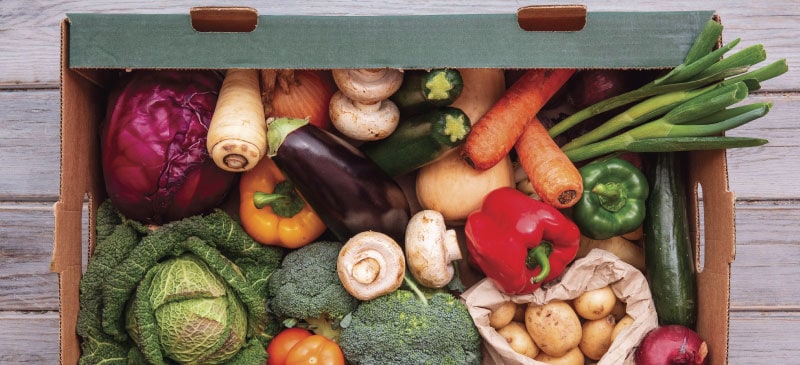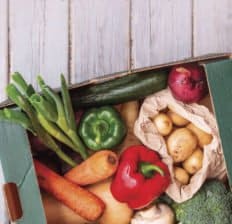This Dr. Axe content is medically reviewed or fact checked to ensure factually accurate information.
With strict editorial sourcing guidelines, we only link to academic research institutions, reputable media sites and, when research is available, medically peer-reviewed studies. Note that the numbers in parentheses (1, 2, etc.) are clickable links to these studies.
The information in our articles is NOT intended to replace a one-on-one relationship with a qualified health care professional and is not intended as medical advice.
This article is based on scientific evidence, written by experts and fact checked by our trained editorial staff. Note that the numbers in parentheses (1, 2, etc.) are clickable links to medically peer-reviewed studies.
Our team includes licensed nutritionists and dietitians, certified health education specialists, as well as certified strength and conditioning specialists, personal trainers and corrective exercise specialists. Our team aims to be not only thorough with its research, but also objective and unbiased.
The information in our articles is NOT intended to replace a one-on-one relationship with a qualified health care professional and is not intended as medical advice.
Eating Seasonally for Better Nutrition … and a Better World
April 21, 2021

You have probably heard about eating seasonally, but it’s difficult to discern just what that means given the abundance of choices we have to choose from.
Walk into your typical supermarket and you can find grapes from Brazil, persimmons from China and papaya from Peru. Although most of our fruits and vegetables come from warm-weather states like California, Florida and Texas, we also get a great deal of produce from Chile, China, Italy, Israel, Egypt, Mexico, New Zealand, Panama, South Africa and Thailand.
Strawberries in winter, rutabaga in spring — cross-country and global commerce puts a wealth of food at our fingertips no matter the season. Great, right? Unfortunately, not really.
Eating food out of season — such as consuming winter vegetables in the summer — makes little sense economically, environmentally or nutritionally. Eating seasonally helps the economy, the environment and your health.
Seasonal vs. Non-Seasonal Nutrition
Have you heard of “food miles”? That’s the distance it takes for your food to travel from where it’s grown to a grocery store near you. Food miles are also a measure of how much gas, oil and other factors go into transporting food.
Thirty-seven percent of the energy used in our food system goes toward the production of chemical fertilizers and pesticides. The 14 percent of the energy used to transport food from farm to store is equal to two-thirds of the total energy used to produce food.
In all, 80 percent of the energy our food system uses goes to processing, packaging, transporting, storing and preparing food — and we’re paying for those costs, rather than for the necessary nutrition.
On average, fruits and vegetables travel 1,300–2,000 miles to get from farms to us. Chilean grapes travel 5,900 miles, and the cargo ships and refrigerated trucks used to ferry them emit 7,000 tons of pollution every year. A typical carrot travels 1,838 miles to get to your salad!
Why does this matter? The nutrient density of these fruits and vegetables begins to decline the instant that they are harvested.
In North America, our fruits and vegetables can spend as much as five days in transit, sit on the supermarket shelves for one to three days before purchase and then sit in a home refrigerator for up to seven days before being eaten.
Biochemical researcher Donald R. Davis says the average vegetable on our supermarket shelves today has anywhere from 5 percent to 40 percent less minerals than those 50 years ago. Other experts estimate that you’d have to eat eight oranges to get the nutrient value that your grandmother would have by eating one.
Green beans and peas lose anywhere from 15 percent to 77 percent of their nutrient content by the time we eat them. Even normally nutrition-rich broccoli may lose almost 60 percent of its flavonoids.
Related: What Is the Climatarian Diet? Benefits, Meal Plan & More
Sustainable Agriculture
A number of factors contribute to the nutrient decline in food, but most of them have to do with industrial mega-farming.
Chemical and pesticide use degrades nutrients. The U.S. Food and Drug Administration reports that 54 percent of our fruits and 36 percent of our vegetables contain pesticides. An apple may be sprayed up to 16 times over the course of its lifetime with over 30 different chemicals.
Genetic engineering, used to grow produce that is bigger, prettier and hardier, leaves nutrient content out of the mix. The bigger that tomato is, the fewer nutrients it contains.
This nutrient depletion starts with soil. Farming practices used by mega-farms reduce the nutrients in the soil, so less is available for plants.
On top of that, produce is forced to unnatural ripeness, skipping nutrient-building seasonality. Threefold differences in vitamin C content have been found in the nutrition in spinach from harvesting in summer versus winter.
Sustainable agriculture refers to eating locally and supporting farms that protect the land and practice Earth-friendly methods. Research has shown that sustainable agriculture can increase food production by 79 percent while reducing farming effects on the climate.
Buying local means that you buy foods that are naturally ripened and nutrient-rich and endure less travel, processing and packaging. Sustainable means that these farming practices allow our food supply to thrive long term.
Related: Top 20 Summer Fruits and How to Add Them to Your Diet
How We Were Meant to Eat
The industrialization of agriculture only occurred a short time ago (within the last 50–100 years). When we were directly involved in the harvesting, collecting and preparation of our own food, we ate seasonally.
The advent of low-nutrient, toxin-rich and highly processed foods is a major contributor to the declining health of humanity.
Traditionally, our seasonal eating would (and still should!) have consisted of fresh fruits and vegetables in the summer. We’d have eaten plenty of unprocessed, whole grains.
In the fall, we’d invest our energy into hunting or handling animal meats; gathering nuts, seeds, berries, fall fruits and fall vegetables; and preserving the harvest. Winter would be about the nuts, seeds and berries we’d gathered, and we’d enter a sort of hibernation, living off the fat we’d put on during the summer.
Spring would bring more activity and the beginning of fresh plant foods again.
This more natural way of eating describes why I eat close to a Paleo diet, which is full on unprocessed, seasonal foods.
Instead, while our bodies still react to the seasons, today, food-wise, we live in perpetual summer. We’re packing on the fat throughout the year without expending the energy we would have used in order to get the food. And we’re not getting enough nutrients to prevent the cold or flu in the winter.
Related: Can You Eat Snow? Whether It’s Safe, Plus Pros + Cons
Our Palate
Another reason to eat seasonally is taste. Food that is fresh and naturally ripened tastes a world apart from produce that’s forced and stale. Chef Kurt Michael Friese says that when we eat foods out of season, we’re less sensitive to the taste and quality of our food: “Our palate weakens just as our eyesight would if left in the dark for too long.”
Winter vegetables? There are many winter vegetables we don’t make use of.
Eating seasonally can open whole new worlds of foods! Instead of limiting the diversity of the foods you eat, eating seasonally expands it.
Some nutrient-rich winter plant foods include garlic, onions, parsnips, sweet potatoes, kale, mustard greens, Swiss chard and turnips.
Journalist Michael Pollan tells us that there are 80,000 edible species of plant foods known. Three thousand have been in common use, but today, just four industrially grown crops account for two-thirds of the caloric intake of humans across the globe: corn, rice, soy and wheat!
Humans are omnivores, Pollan points out. We need between 50 and 100 different chemical compounds to remain healthy.
Before mega-farms, California alone used to produce 1,186 varieties of produce. Today, farms focus on 350.
Ecologists consider seasons a source of natural diversity. The changes that occur through the seasons are necessary for the balancing of Earth’s resources and all of the life forms that imbibe them.
Guide for Eating Seasonally
So what’s in season? Seasons vary in different parts of the world and even in different regions in the same country, but there is both specific and general guidance available for eating seasonally.
All plants go through a similar life cycle:
- sprouting
- leafing
- flowering
- fruiting
- then stockpiling sugars into the roots
Leafy greens are best in the spring. The broccoli “flower” and tomato “fruit” are best in summer. Pumpkin and other root vegetables contain large amounts of stored nutrients for fall and winter.
Check out the Sustainable Table website to see what foods are seasonal in your region of the world and start eating seasonally.





